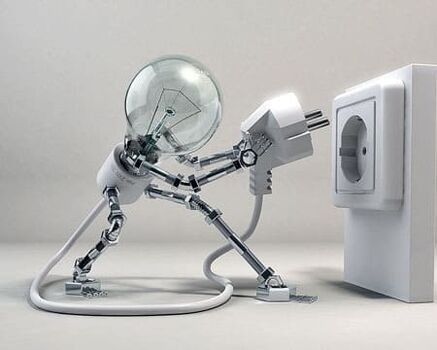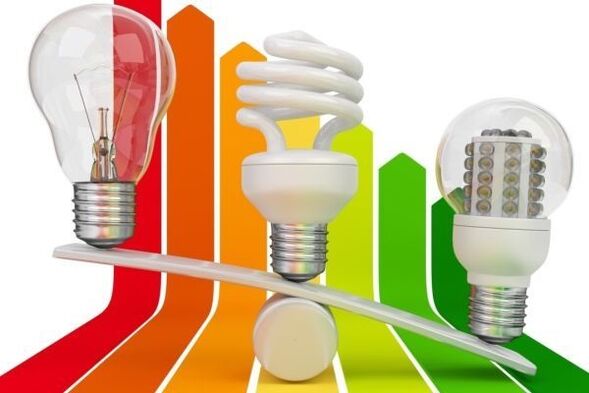
The price of energy carriers is growing regularly, so the question of how to save electricity at home is becoming more and more relevant. It should be noted that if about ten or fifteen years ago the average family of three did not particularly think about it, since the cost of utilities did not swallow most of the budget, now the situation has changed dramatically.
At the same time, using all modern energy-saving possibilities, there is no need to use dim lighting, refuse to turn on the necessary devices and "rewind" meter readings, threatening violators with impressive fines. It is important to simply recognize and take for granted the need to save money and adhere to this principle in a way that is very accessible to each of us.
Today on the agenda: how and how much you can save on electricity. We all sometimes ask ourselves the question: "Am I paying a lot for light (or electricity)? Is it possible to reduce these payments in some way? "But as a rule, the matter does not go beyond conversations. But in fact, not everything is so scary and difficult. Try to apply the rules described below (or at least some of them) and you will immediately notice the difference.
There are two ways to reduce the electricity bill:
- slightly change our behavior
- we use modern energy saving technologies
In the first case, everything will depend only on us, that is. adhering to certain rules will reduce energy costs. The second method involves investing in the purchase of equipment and devices that can significantly reduce electricity consumption. But . . . having invested once, you can relax, the technique will do everything for you. And in most cases, the costs pay for themselves within a year.
If we turn to statistics, the approximate costs in an average apartment for electricity are distributed as follows:
- 25% - electric stove, kettle, microwave oven and other kitchen appliances
- 21% - refrigerator
- 20% - lighting
- 9% - washing machine, dishwasher
- 11% television, computer
- 14% - others
With this data, you can roughly estimate how much and what you can start saving on. Before you start, I advise you to write down how much energy you consume per month. For what? This will allow you to understand how much you really save by applying certain methods. The result will be immediately visible and this will give you an additional incentive.
Let's start saving energy:
Turn off the light when you go
Everyone knows the expression, only that. . . for some reason we don't use it at home. In vain, this is the easiest and cheapest way to save energy. Get in the habit of turning off the lights when you leave the room. The court can also be attributed as a working television. Such "excesses" cost us about 30% of all lighting costs.
energy saving lamps
Old incandescent lamps consumed 100 watts, energy saving - 20 watts. Saving on power consumption by 5 times. Now popular LED lamps with a power of 5 watts. Of course, they are more expensive than both, but with the same lighting brightness, they consume MUCH less power and last longer. Don't be stingy and buy. The main thing is to choose those that have a great guarantee, about 2 years. Within a year, LED lamps pay off in spades.

more natural light
Rooms with white or light colored wallpaper are lighter (pardon the pun) as they reflect 90% of the light. For example, dark tones (closer to black) absorb up to 90% of the light that reaches them. Keep windows and lamps clean. Not very clean, dusty, they are capable of retaining up to 30% of the light. Do not fill the windowsill with flowers and other nonsense. Position your workspace near a window. If you don't have enough light, use a low wattage table lamp.
Multi-tariff meters (day-night)
The benefit is that many appliances are always on (fridge) or in sleep mode (computers, TV, etc. ). Consequently, in the evening-night time, the cost of energy consumption will decrease. If you transfer some energy-intensive operations to the night (washing, cooking, ironing), the savings will be even more noticeable.
Turn off all appliances
First of all, this is equipment that works in standby mode: a computer, a TV, a microwave oven. air conditioning, water heater and many others. Count how many hours (or even minutes) a day you use this or that device. Microwave for 15 minutes, TV say 2-3 hours, etc.
It turns out that in standby mode, the devices work almost around the clock - from 20 to 23 hours. And all this time they are slowly "robbing" us of energy, and therefore money. Each individual, of course, does not consume much, but takes in quantity. For a year, standby costs us about 3, 000 rubles.
Few people know it, but many devices still consume energy even if they are turned off, but not disconnected from the network: hair dryer, phone charger.
smart technology
Use devices with energy class A (consequently, the one that consumes the most energy is class G). The difference in power consumption, even between modern models, can vary significantly. What can we say about obsolete equipment (originally from the 90's and earlier). The difference in power consumption may differ, no, not sometimes. Dozens of times!
Many models have an automatic saving mode. For example, in washing machines and dishwashers, depending on the workload, the system uses the optimal amount of water and energy, reducing consumption by 30-40 percent. If you're not planning on changing teams yet, we'll save on what we have.
Accessories
Refrigerator
Proper installation away from direct sunlight, central heating and stoves will save 20-30%. Additional measures: leave a space between the refrigerator and the wall so that air can circulate freely. Defrost more often: the more frost, the higher the energy consumption. There are no hot foods in the fridge. Always cover all liquid dishes (soups, compotes). Remember, higher humidity equals higher energy consumption.
washing machines and dishwashers
- Work only at full load.
- In the fast and economical washing mode.
- Low temperature washing (washing) (where high temperature washing is not needed)
Cooking
- If you have gas in your apartment, you're in luck. It is several times cheaper than electricity.
- Boil with the lid closed.
- Always boil water only the amount needed.
- The water previously poured for cooking in the pan is heated to room temperature and the stove needs less energy to heat it and boil it more.
- residual heat. Turn off the stove 10-20 minutes before the end of cooking. The cooked dish itself will reach the desired condition.
- Microwave the dish at once on a large plate, then you can portion it out for everyone.
ironing
- Clothes that are too dry or not too dry result in higher energy consumption. We use the golden mean.
- Turn off the iron 5-10 minutes before the end of ironing. We iron on residual heat.
- Use an iron with an automatic shut-off function.
Warming up
Up to 50% of heat loss in an apartment occurs through windows and doors. Our actions are plastic windows (they reduce heat consumption by 80% at a time) or a more economical option - we close all cracks in windows and doors (we use seals). If the house is cool (not cold), do not rush to turn on the heater right away; sometimes it is enough to wear something warmer than clothing.
As you can see, it is not that difficult to start saving on electricity. You can easily save 30-50%, if you get a little confused you can usually reduce payments by 2-2. 5 times. The main thing is to activate the "energy saving" mode in your head. You will immediately notice that the payments will decrease. Good luck with all your savings.
























